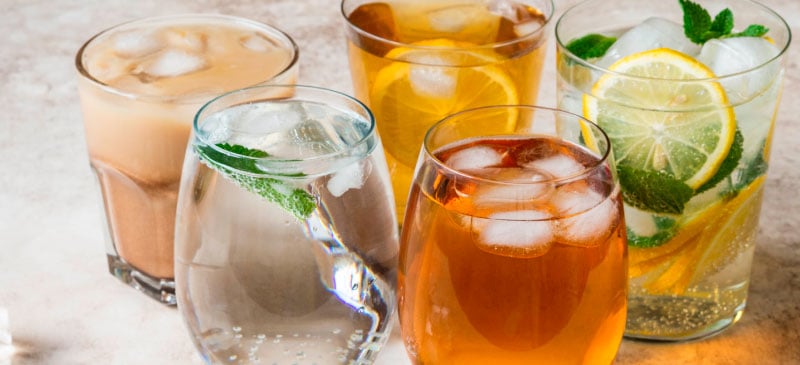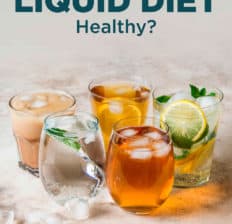This Dr. Axe content is medically reviewed or fact checked to ensure factually accurate information.
With strict editorial sourcing guidelines, we only link to academic research institutions, reputable media sites and, when research is available, medically peer-reviewed studies. Note that the numbers in parentheses (1, 2, etc.) are clickable links to these studies.
The information in our articles is NOT intended to replace a one-on-one relationship with a qualified health care professional and is not intended as medical advice.
This article is based on scientific evidence, written by experts and fact checked by our trained editorial staff. Note that the numbers in parentheses (1, 2, etc.) are clickable links to medically peer-reviewed studies.
Our team includes licensed nutritionists and dietitians, certified health education specialists, as well as certified strength and conditioning specialists, personal trainers and corrective exercise specialists. Our team aims to be not only thorough with its research, but also objective and unbiased.
The information in our articles is NOT intended to replace a one-on-one relationship with a qualified health care professional and is not intended as medical advice.
Liquid Diet Types, Potential Benefits and Sample Meals
December 17, 2022

Detoxifying the body through a fast or liquid diet has become more and more common, especially for people who are looking to reduce bloating, increase energy, cleanse the body of toxins or recover from a medical procedure.
There’s no shortage of liquid diet programs out there, some focusing on juicing while others involve consuming clear liquids, like broth and tea. The type of liquid diet you choose depends on your goals, but don’t be fooled by companies that charge an arm and a leg for detox kits — it’s easy to prepare liquid diet foods at home and make it work for you.
What Is a Liquid Diet? (Types)
A liquid diet is when you consume foods in liquid form only. This can include juices, smoothies, teas, broths and liquid meal replacements.
There are no specific rules for a liquid diet, and there are many types out there, so people choose one based on their health and weight goals.
The most popular types of liquid diets include:
- Juice cleanse: A juice cleanse involves drinking juices made from fruits and vegetables for a specific period of time. There are variations of a juice diet, with juice making up one meal or nixing solid foods altogether for juices.
- Detox drinks diet: Consuming detox drinks that are made with fruits, vegetables and herbs is used to promote detoxification. Adding detox drinks to your diet may help relieve constipation, bloating, gas, headaches and other signs of toxic overload. You can add detox drinks to a typical food-based diet or consume them alone for a specific period of time, such as one to two days.
- Clear liquid diet: A clear liquid diet consists of only, as the name implies, clear liquid, such as broth, tea and water. It’s a form of fasting that’s often used for weight loss, detoxification and preparing for a medical procedure.
- Full liquid diet: Unlike sticking to clear liquids, a full liquid diet includes foods in liquid form. The purpose is to give your digestive system time to rest and rebound, as the liquid foods contain almost zero fiber or protein.
How It Works
When doing a liquid diet, you typically choose between clear or full liquid “foods.” Clear liquids are generally consumed before a medical procedure that involves the digestive tract, such as a colonoscopy. It may also be recommended by your health care provider to reduce inflammation or irritation from digestive disorders, such as diverticulitis and Crohn’s disease.
On a clear liquid diet, you drink or sip hydrating liquids throughout the day and get just enough calories and nutrients to maintain your energy. (Learn “how many calories should I eat a day?”)
A full liquid diet allows you to eat foods but in liquid form only. This type of diet may be recommended for people recovering from surgery, such as bariatric surgery, or who have difficulty swallowing. Foods are pureed (like baby food) and watered down with milk, broth or water.
When done with healthy, nutrient-dense foods, it also promotes detoxification and gives your digestive system a moment to rest and rebound.
Foods to Eat/Avoid (Plus Sample Menu)
Clear Liquid Diet
Eat:
- Water
- Clear broth
- Clear soups
- Black coffee
- Tea
- Raw honey
- Apple juice
- Plain gelatin
Avoid:
- Sodas and sugary drinks
- Pulpy fruit or vegetable juices
- All solid foods
Sample Menu:
Breakfast
- One cup of apple juice
- One cup of gelatin
- Coffee
Lunch
- One cup of broth
- Water/tea
Dinner
- One cup of clear soup
- One cup gelatin
- Water
Snacks
- Coffee/tea
- Broth
- Teaspoon of honey
- Clear fruit juice
Full Liquid Diet
Eat:
- Water
- Clear broths
- Pureed vegetable soups
- Creamed soups
- Cow’s milk and nut milks
- Plain yogurt
- Butter or margarine
- Honey
- Maple syrup
- Creamy nut butters
- Cream of wheat
- Grits
- Polenta
- Coffee and tea
- Fruit and vegetable juices
- Gelatin
- Pudding
- Ice cream
Avoid:
- Nuts and seeds
- Cheeses
- Pastas and rice
- Breads and grains
- Meats
- Mashed fruits and vegetables
- Soda and other carbonated drinks
Sample menu:
Breakfast
- One cup of plain yogurt
- One teaspoon of creamy nut butter
- Half cup of fruit juice
- Coffee
Lunch
- One cup polenta with teaspoon of butter
- One cup of pureed vegetable soup
- Water/tea
Dinner
- Two cups of pureed vegetable soup
- Half cup of hot cereal
- Water
Snacks
- Fruit juice
- Jello or pudding
- Half cup of milk
Benefits
1. Provides Micronutrients
Full liquid diets or juice diets that incorporate fruits and vegetables provide a burst of micronutrients. The vitamins, minerals and antioxidants present in fruits and vegetables are critical for overall health, playing a role in several body functions and protecting the body from chronic disease. Plus, most Americans don’t get enough fruits and vegetables in their diets, so this guarantees that your nutrient needs are met.
2. Aids Short-Term Weight Loss
Cleanses and liquid diets are often done to boost weight loss, and research indicates that they do help, at least with short-term weight loss and weight maintenance.
3. Aids Digestion
Because your digestive system gets a break during a liquid diet, you’ll likely notice reduced bloating, constipation and gassiness.
4. Helps Fight Diabetes
Research published in Diabetes Care found that liquid meal replacement diets not only allowed for modest reductions in weight and body mass index, but also improved fasting glucose, fasting insulin and blood pressure.
5. May Boost Mental Alertness
Because a liquid diet promotes detoxification and helps relieve your body of toxic overload, you may feel a boost of energy or mental alertness as a result.
6. Keeps You Hydrated Before/After Medical Procedure
People undergoing medical procedures, like a colonoscopy, often need to go on a liquid diet beforehand in order to clear out the digestive tract. People with conditions like dysphagia and digestive disorders may also be prescribed a liquid diet.
This type of diet allows patients to maintain hydration and get critical electrolytes and calories during the pre-surgery or recovery phase.
Risks and Side Effects
Some liquid diets, especially those consisting only of clear foods, are very low in calories and should only be done for one to three days. If you feel dizzy from a lack of calorie intake, increase your liquid intake, and speak to your doctor about further recommendations if you’re on the diet for medical reasons.
If you experience adverse effects from a liquid diet, such as nausea, diarrhea or fever, bring solid food items back into your diet slowly, unless told otherwise by your doctor.
Be cautious of liquid diet programs that come with premixed drinks. Sometimes, these products are loaded with sugars and artificial ingredients.
Other Considerations
If you’re on a liquid diet because of an upcoming medical procedure, be sure to speak to your doctor or health care provider about any specific guidelines or requirements.
If eating three meals isn’t enough to give you energy for the day, try eating more often and drinking water every 20–30 minutes throughout the day.
While it’s likely you’ll lose weight during a liquid diet, it’s typically temporary. Long-term weight loss won’t occur with a quick fix. It takes a change in dietary and lifestyle habits.
If you’re considering a liquid diet strictly to detox the body and lose weight, consider a detox diet, which allows for the consumption of whole foods.
Conclusion
- A liquid diet is when you consume foods in liquid form only. This can include juices, smoothies, teas, broths and liquid meal replacements.
- There are many types of liquid diets, so people choose one based on their health and weight goals. Two common types include the clear liquid diet and full liquid diet.
- Oftentimes, liquid diets are required before a medical procedure or during the recovery phase. People who have trouble swallowing may also need to be on a liquid diet.




